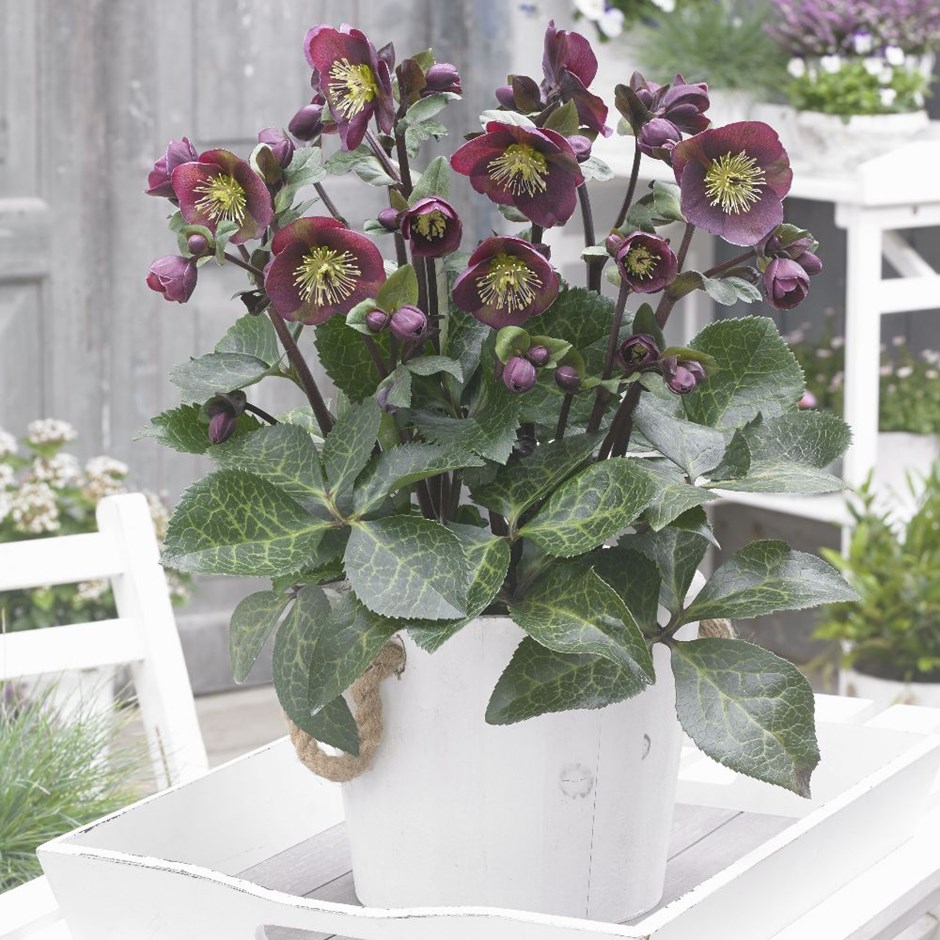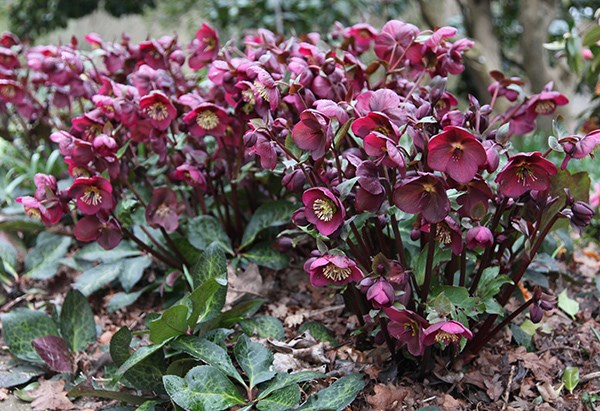A long standing favourite winter flowering plant and an important one for early pollinators, the Hellebores produce their cheery blooms when the skies are at their greyest. There are single and double flowered varieties, some early flowering and some late flowering. The series I want to draw your attention to here are the wonderful Rodney Davey Marbled Group. Bred in Devon by the renowned Rodney Davey and Lynda Windsor on a small specialist nursery, these delightful forms bear marbled leaves like they have been draped in the finest lace. Beautiful as this is, it does not detract from the gorgeous blooms in delightful hues borne from February to April.
These stunning plants were initially frustrating to propagate. However, modern micropropagation techniques ensure they are available to the masses. Below I wish to introduce you to some of the exciting breeding that is now on sale.
Helleborus (Rodney Davey Marbled Group) reanna’s ruby (‘Epb 32’) (PBR)
Pictured at the top of the article, this is a relatively new cultivar that is a prolific bloomer. It produces its whopping flat-faced flowers (up to 7cm across) from late winter to mid-spring above the silver-marbled foliage. Use it to drift beneath trees and shrubs, or line a partially shaded pathway with it – you won’t be disappointed.
Helleborus (Rodney Davey Marbled Group) anna’s red (‘Abcrd02’) (PBR)
Named after plantswoman Anna Pavord and bred by Rodney Davey, this is the first red flowering hellebore with marbled foliage. It produces masses of flowers from late winter, each of them larger than average. Happiest in partial shade, it looks sublime underplanted with spring flowering bulbs.
This amazing group of plants is perennial and so will bring us winter joy for many years to come. They thrive in partial shade in neutral to alkaline, freely draining soil or in containers. They will withstand all the temperatures the U.K climate has to throw at them.
To view these and other varieties from the series at Crocus click here
Mark Snelling
Harmful if eaten/skin irritant
Images and descriptions copyright Crocus.co.uk
If you have enjoyed reading our blog post then why not fill in the form provided to allow us to send you our blog posts and newsletters by email.


